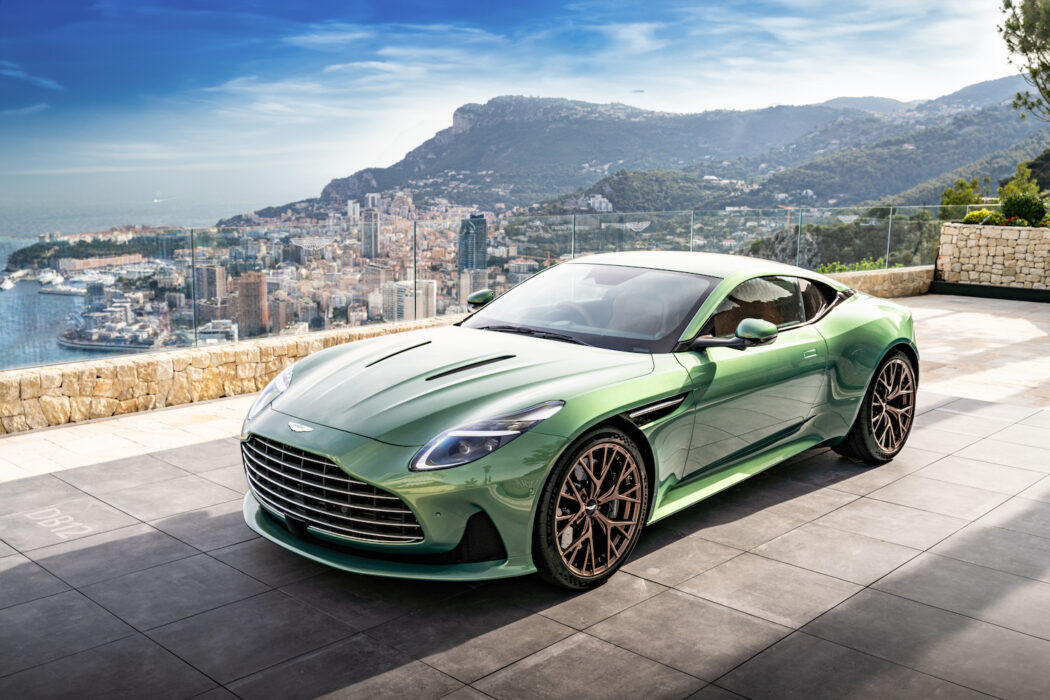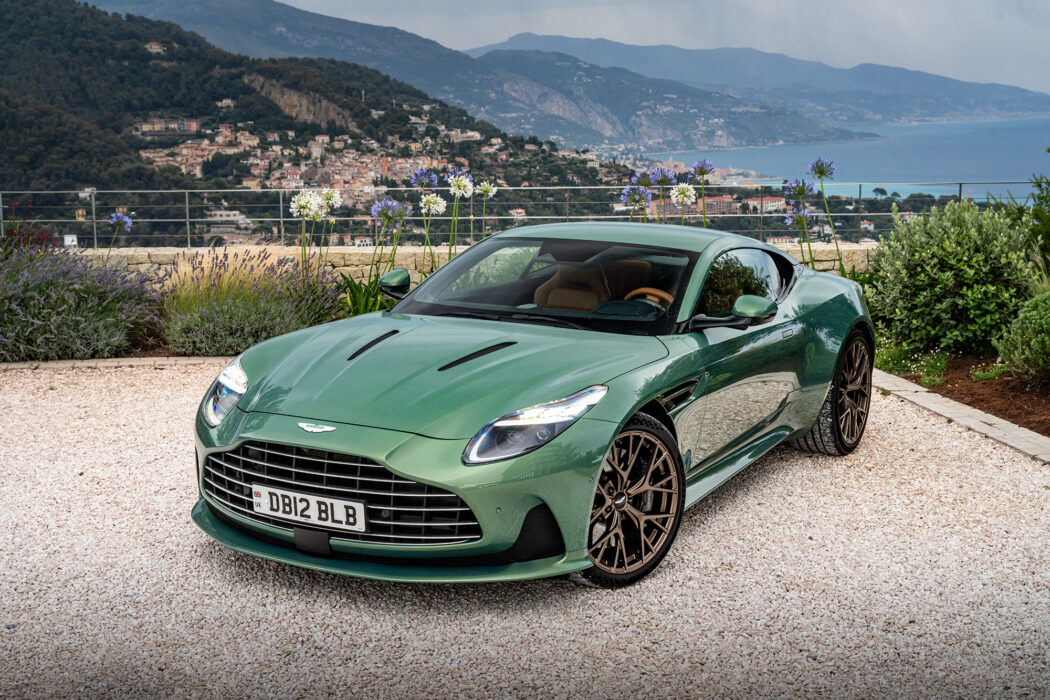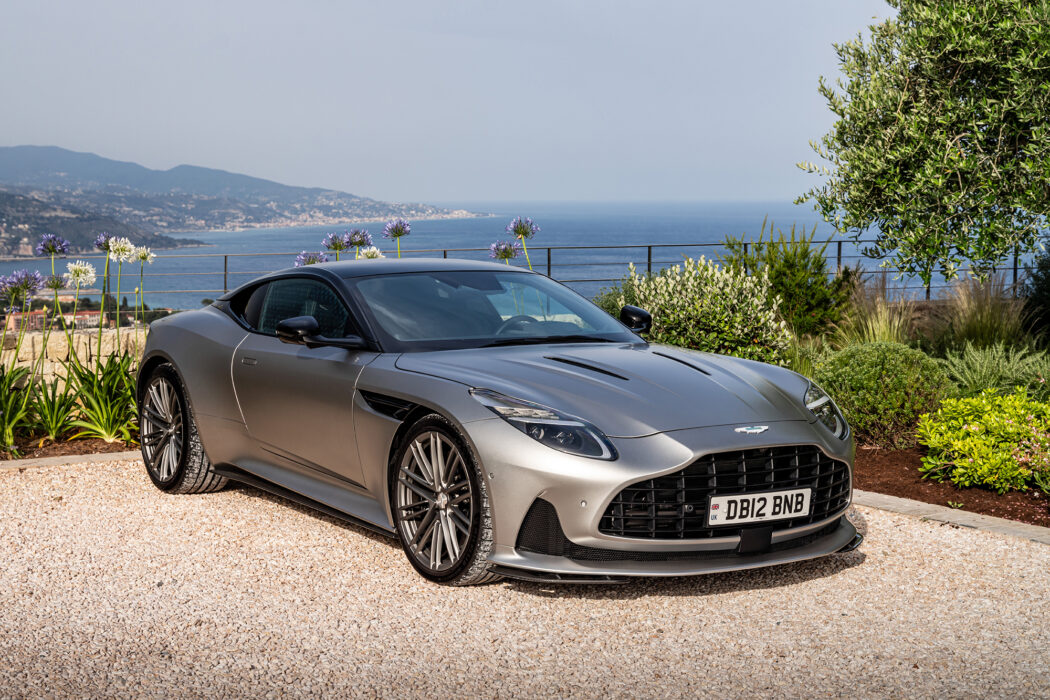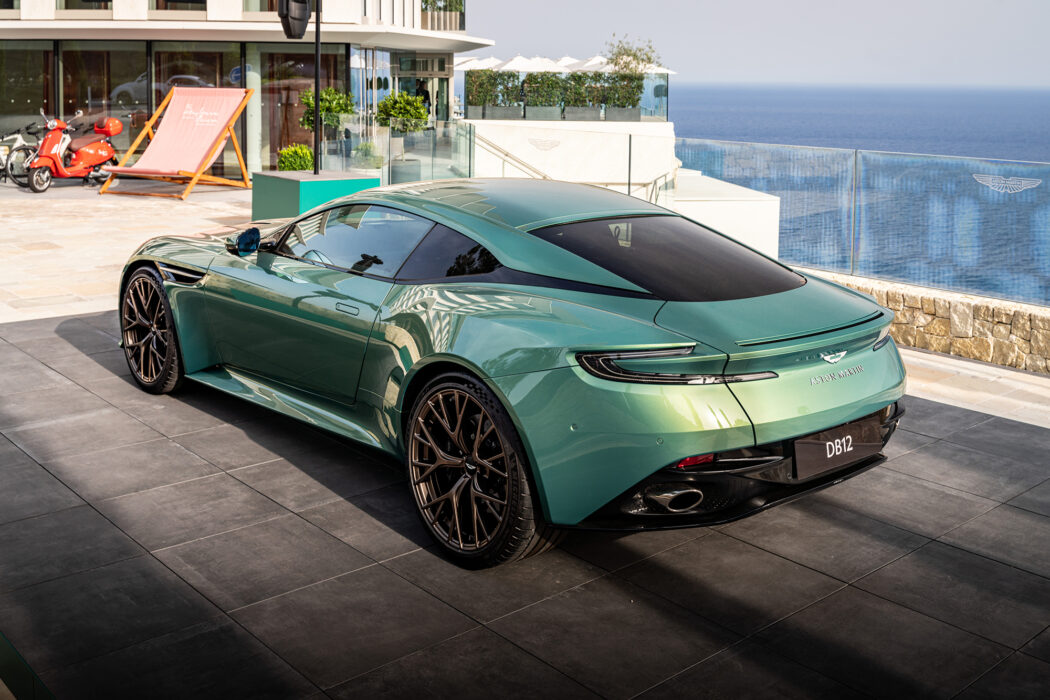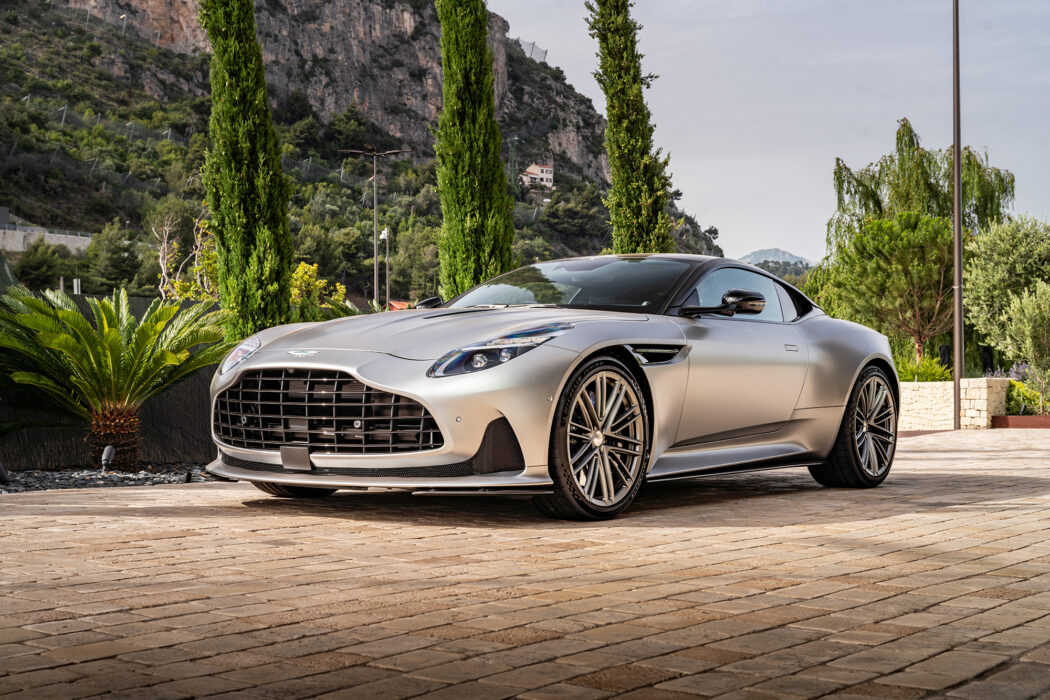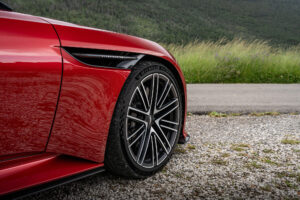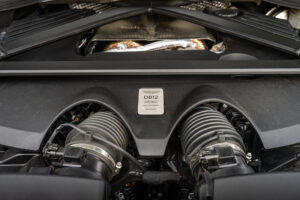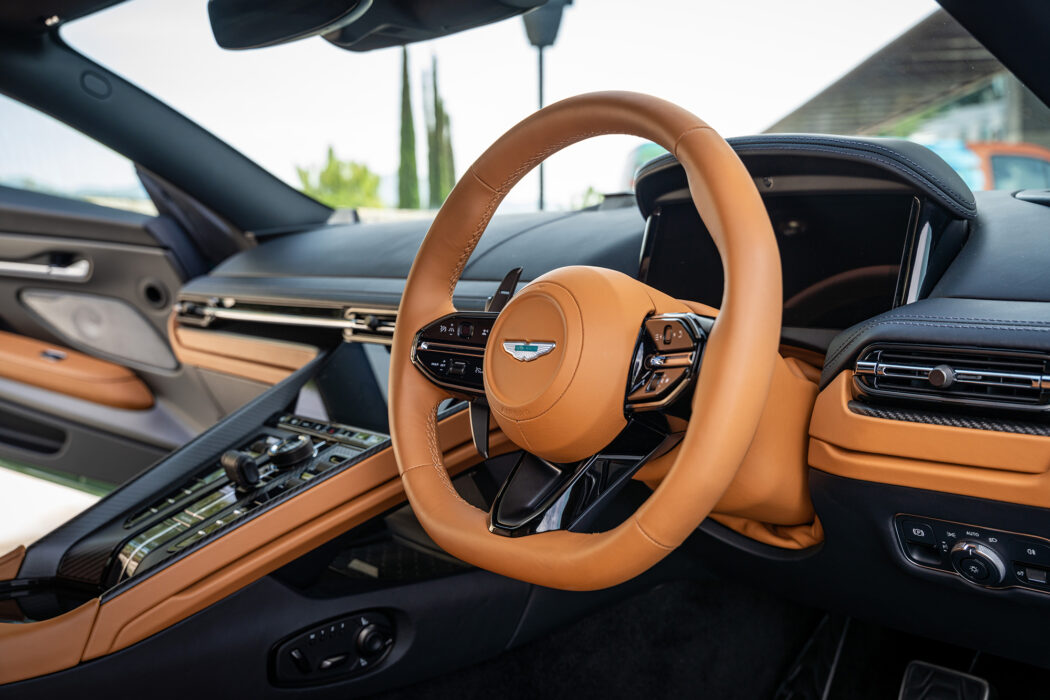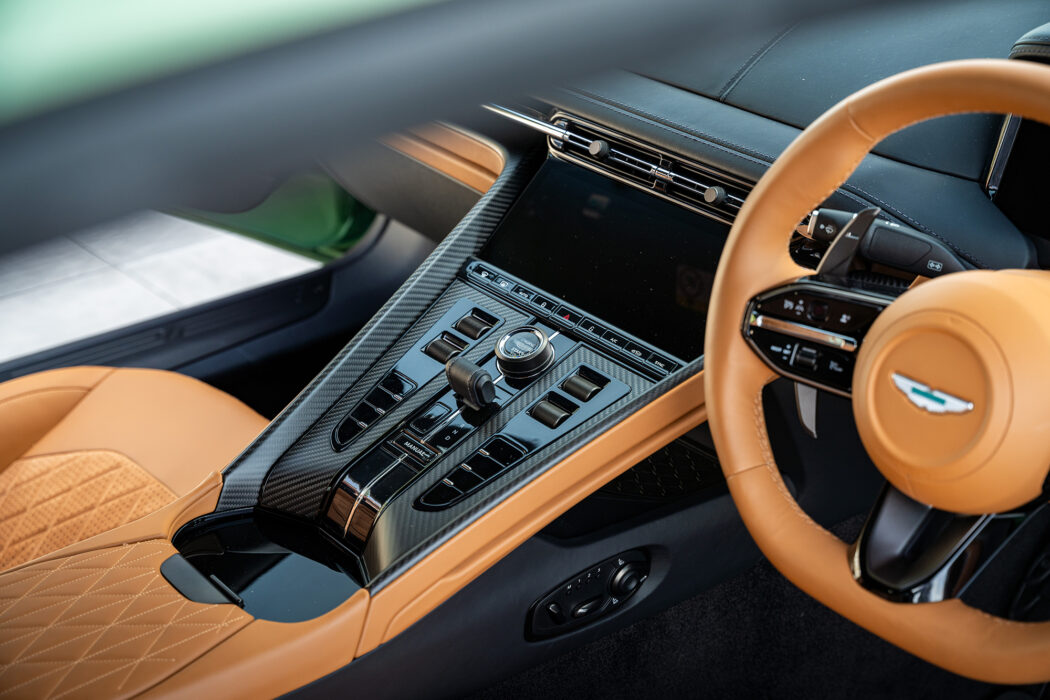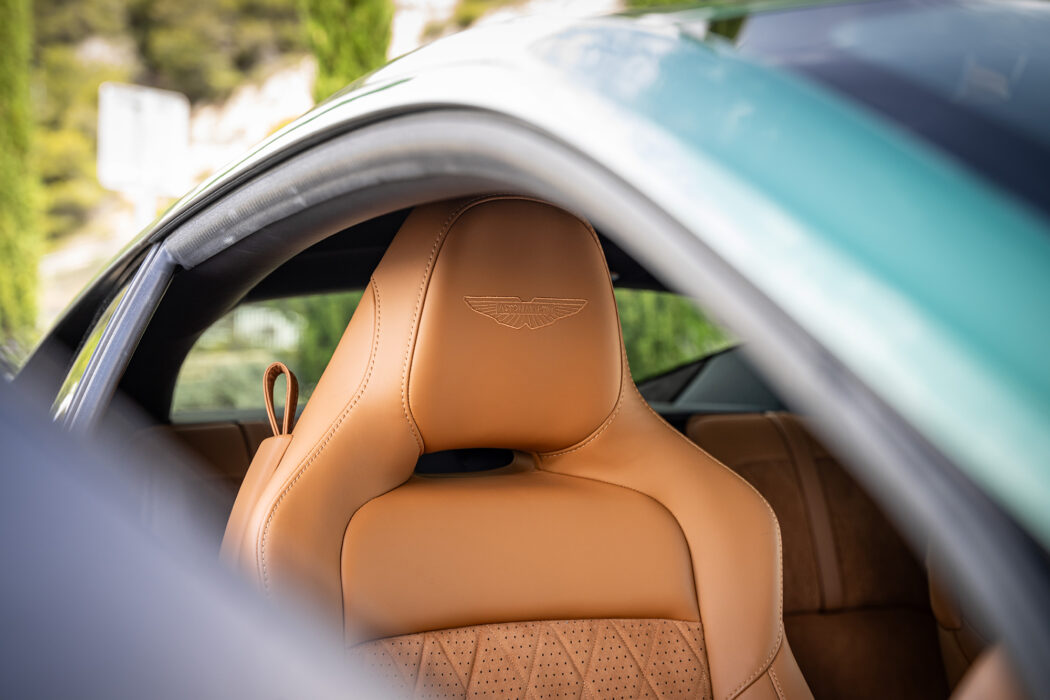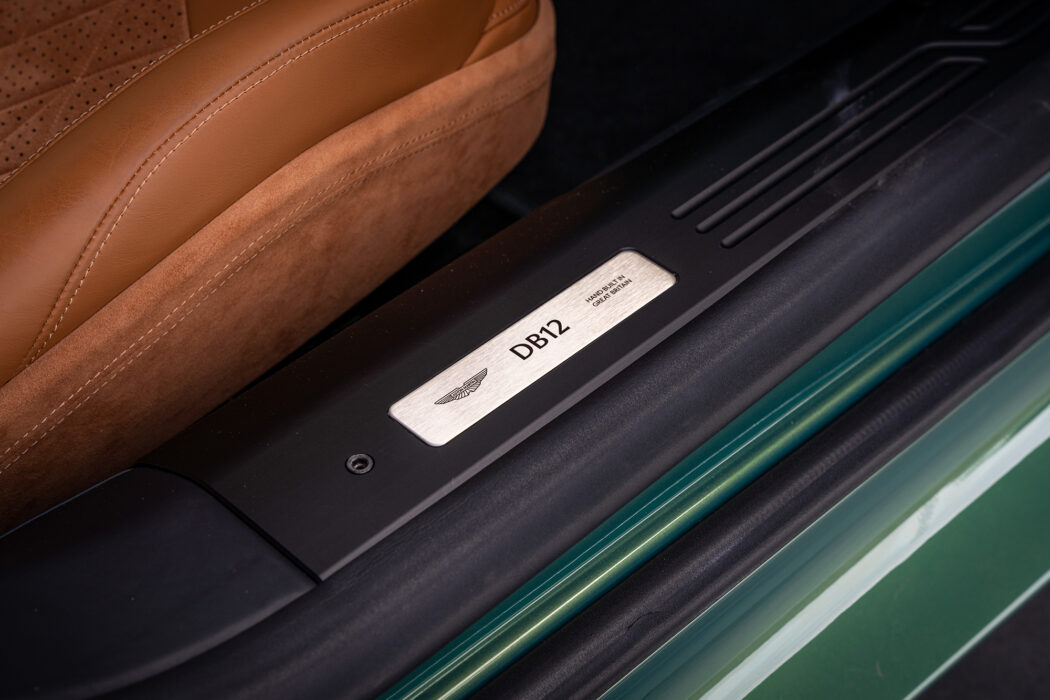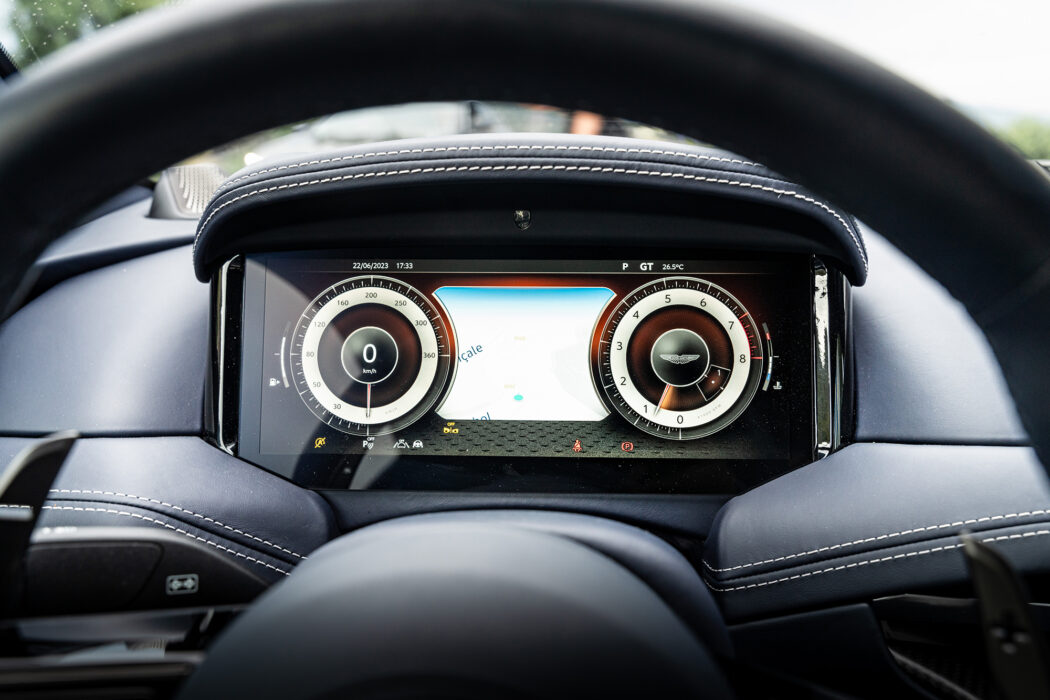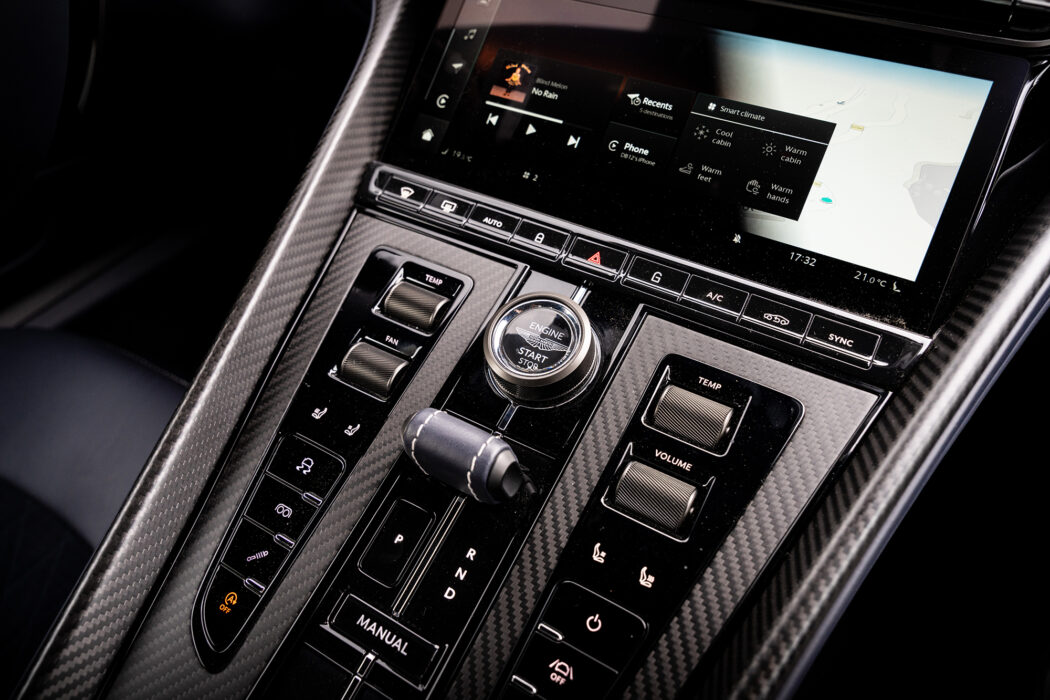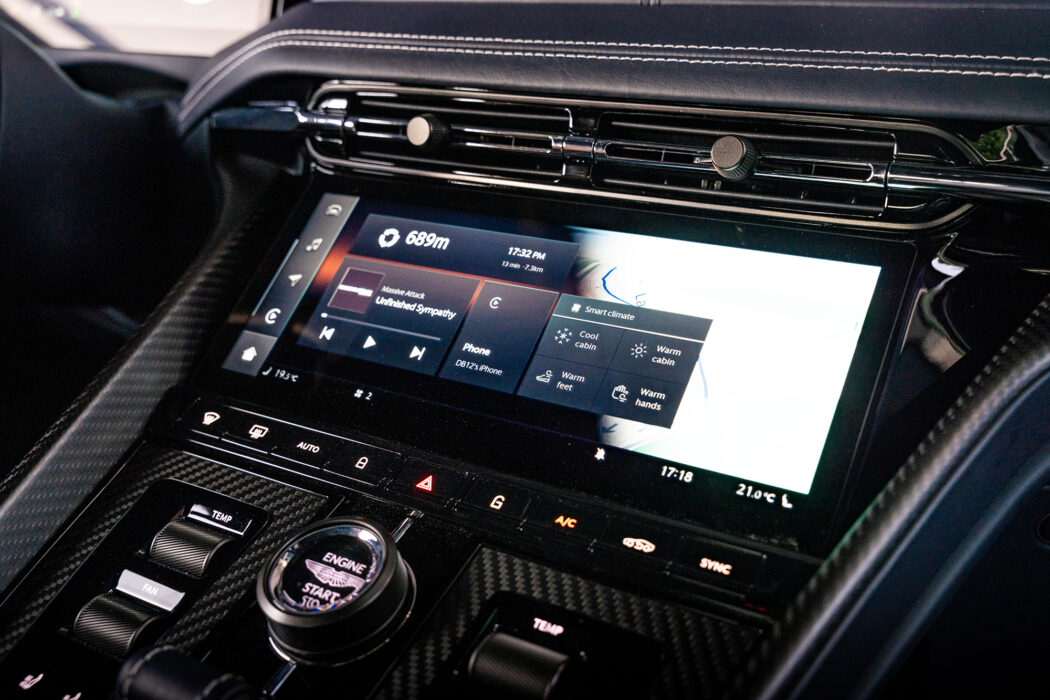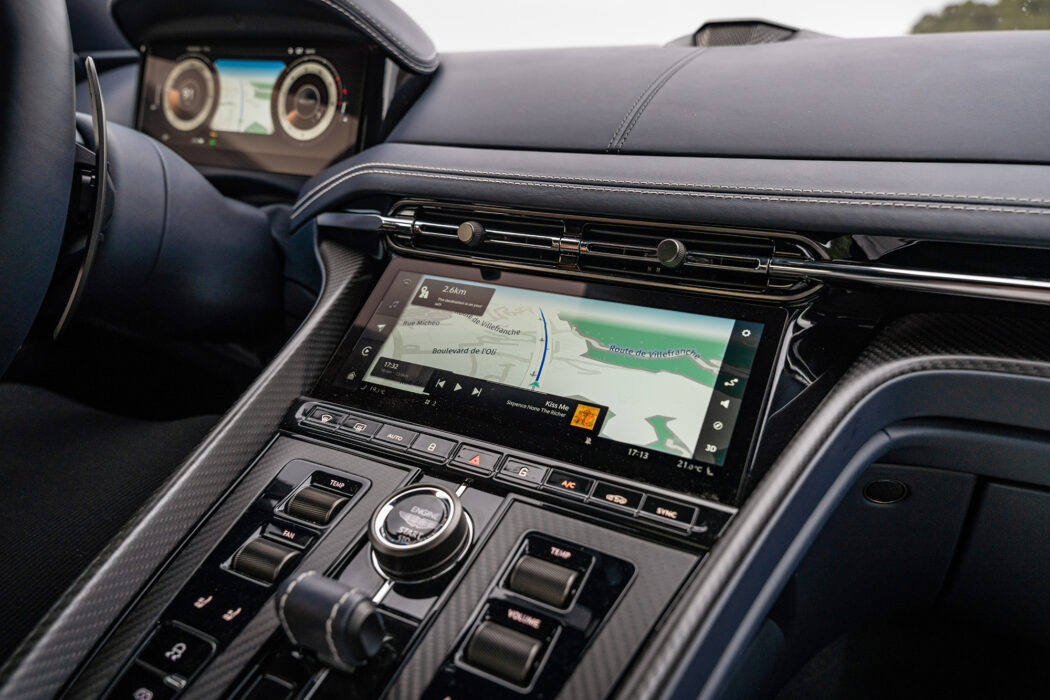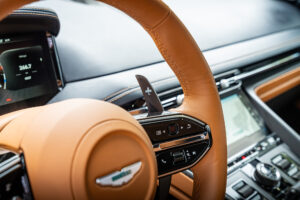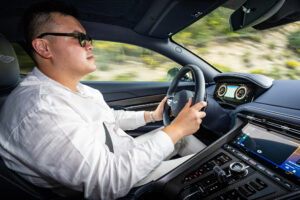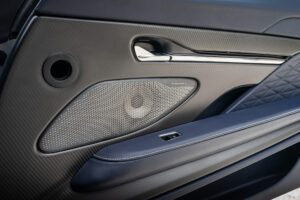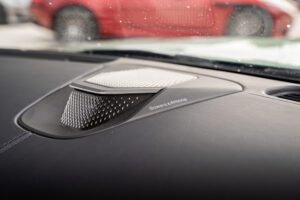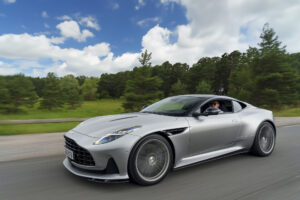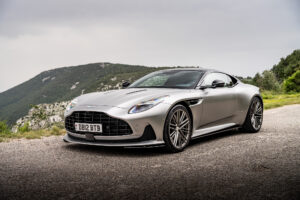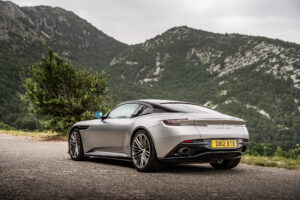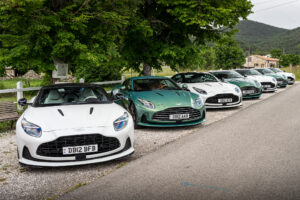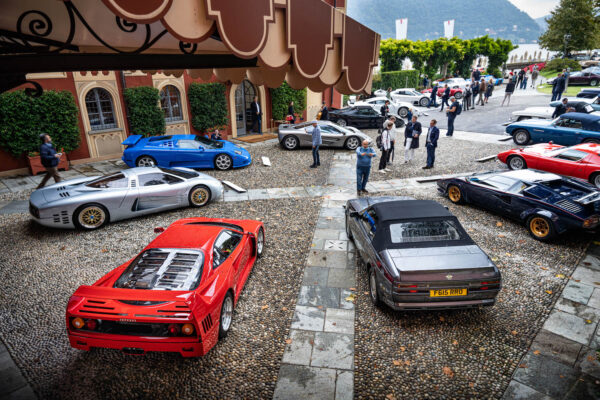What makes the perfect Grand Tourer? Over the years, many manufacturers have been seeking an answer to this age-old question. For me, the perfect GT car should incorporate three essentials: a fatigue-eliminating interior, usable luggage space and dynamic performance which can adapt to whatever roads lay ahead. Aston Martin, a manufacturer whose legacy consists of some of the greatest GT cars ever made, believes that they have the quintessential example.
The British automaker is now heavily focusing on elevating itself to become the world’s most desirable ultra-luxury British brand. Q New York; Aston Martin’s bespoke personalisation division, will be a key element in its strategy to uplift Aston Martin. Unique personalisation options paired with limited-run models are components to create scarcity and demand. This fresh Q look and feel will also be filtered to all 160 Aston Martin dealers worldwide. However, it’s not only the dealers who are changing.
Aston Martin as a brand is making a resurgence. Lawrence Stroll’s hands-on approach, with the boots on the ground in Gaydon (paired with the team’s success in F1) has ushered a new wave of energy into the brand. The automotive team is working with the F1 team to present a united front. On the track, the Official F1 Safety Car is the Vantage F1 Edition alongside the DBX 707 as the Medical Car. This alone has garnered a massive buzz around Aston Martin, a buzz which reportedly generated 72% of new Aston Martin owners from the Vantage F1 Edition alone. From the track to the road, A new era of Aston Martin has dawned.
READ THE FEATURE IN THE CILLIAN MURPHY EDITION HERE
As I gaze over a sun-draped Monaco; the jewel of the F1 calendar, I truly believe there’s no better place to drive ‘The World’s First Super Tourer’, The Aston Martin DB12.
Pulling up to The Maybourne Riviera in the hills overlooking Monaco, I was greeted by two DB12s. One finished in sleek Satin Aluminite Silver and the other in the striking Iridescent Emerald, both from the Q colour palette. The DB12 wears both colours well, and the choice to present in two very contemporary hues suggests a direct aim being taken at the younger market. The Satin Aluminite Silver example was fitted with the Carbon Fibre Lower Package, which sports a carbon splitter and side sills to match the rear diffuser. It’s a subtle change, but one that adds a bit more ‘Super’ to this Tourer.
Upon looking at this fresh-faced Super-GT, my initial thought was how the design vaguely resembled the One-77 – the outrageous Hyper-GT unveiled in 2008 of which Aston Martin only made 77. The most noticeable component of the all-new front fascia is the signature Aston Martin grille, which is now 58% bigger than the DB11’s, to account for the larger cooling setup. The all-new headlights incorporate advanced LED technology, echoing elements seen in Valkyrie. They even have a special triangular pattern to stop the refraction of your lights from blinding others. You have three options of 21” forged wheels, all of which are wrapped in an Aston Martin-specific Michelin Pilot Sport S5 tyre. The rear of the DB12 is nearly identical to that of the DB11, the only revision being to the rear haunches of the car which adds an accent line above the rear lights.
The DB11 forged the path for the cars that ensued. It was the first to introduce the twin-turbo 6.0L V12 later used in the DBS Superleggera. It was also the first to introduce a whole new design language which can still be seen in the current roster. The DB12’s exterior carries the same allure that the DBS Superleggera introduced but the DB11 lacked. The grille is larger, lower and more prominent; doing away with the pouty lower lip that the DB11 appeared to have. Stronger bonnet lines and a pronounced nose present a powerful, more aggressive face whilst integrating into elegant lines that flow down the side of the car. I’m pleased that Aston Martin’s new approach, starting with the DB12, is to blur the lines between performance and ultra-luxury.
There is a plethora of technologies featured on the DB12 which substantiates the title of ‘Super Tourer’. The DB12 will only be offered with a reworked version of the Mercedes-AMG derived 4.0L biturbo V8, an engine we know and love from the likes of the DB11, Vantage and DBX. Unlike the other Aston Martin models which share the same German heart, the DB12 sounds distinctly different; there’s a more refined raspy bellow instead of a very recognisable V8 that can be heard throughout Affalterbach. The V8, which is ‘front-mid-engined’, houses bigger turbos as well as more cooling, producing 680PS and 800mn of torque. This means the DB12 will see 0-62mph in 3.5 seconds and holds a top speed of 202mph. Excessive for a Grand Tourer? Perhaps. But we live in a world where the DBX 707 exists: an Aston Martin SUV which has more power and will see 62mph quicker than the DB12. They don’t call the DB12 the ‘Super Tourer’ for nothing.
Other engineering changes include an all-new 9-way adjustable Electronic Stability Program (ESP) and traction control system featuring a segment-leading Inertia Measurement Unit. Carbon Ceramic brakes are now also available on the DB12 to provide greater stopping power, a performance-focused option which was previously unavailable on the DB11. The gearbox is a revised 8-speed automatic ZF with a shorter final drive ratio paired with the electric rear differential from the Vantage. All of these changes ensure that the response and feedback from the DB12 to the driver are seamless. The DB12 also has a 7% torsional stiffness increase over the DB11 as well as intelligent dampers and double wishbone suspension. This results in improved dynamic behaviour no matter if you’re driving through the rural French countryside or the twisting roads in the hills above Monte Carlo.
The biggest change that the DB12 brings is undoubtedly found within the interior. There is no getting away from the fact that some of the legacy Aston Martin interiors had a stale whiff of previous-generation Mercedes-AMG to them. You knew this, I knew this. Most importantly Aston Martin knew this. DB12 introduces an all-new proprietary Aston Martin-designed cabin that I have no doubt will trickle down to new models in the future.
The centre console houses an all-new infotainment system which is displayed on a 10.25” pure black high-resolution touchscreen with a customisable user interface. This same high-resolution screen can be seen on the dashboard without the touch functionality of course. Other leisure-oriented flourishes include wireless Apple CarPlay and Android Auto as well a slew of physical buttons, a well-welcomed sight in today’s minimalist-obsessed design world. Some of those physical controls include the rotary drive mode selector, ESP control, suspension control and active exhaust control. The DB12’s cabin is also home to the upgraded Bowers & Wilkins audio system, a 15-speaker, 1170-watt sound system which features bespoke speaker grilles to match the interior adornments, or in layman’s terms, the finish of the interior trim.
The first thing you notice when you settle into the cabin is how it cossets the driver and the passenger. Even as a man of a certain stature, I felt that the cabin was clearly laid out with all controls being within arms’ reach. The multifunction steering wheel greets you and houses a noticeably smaller centre, thanks to the advancements in airbag technologies. The metal gearshift paddles are now attached to the wheel itself (as opposed to the column in the DB11) and feel adequately sized.
Lashings of carbon trim are present throughout, juxtaposed with supple leather across the dashboard and cockpit. The seats specified on the test units were the 16-way adjustable Sports Plus models, which gave a surprising amount of support during cornering. The seating position was low enough for all 6ft 4” of me. However, like in any 2+2, you won’t get any passengers behind me without needing to detach limbs – a problem that even an average-height man would share. The seats are both heated and ventilated but on a 30°C day, I felt the cooling could have been more intense. After a full day of both driving and being a passenger, I concluded that the seats, although supportive, may be a touch too hard for journeys longer than three hours. I’ll caveat this with the fact that I did have to swap when driving so had to constantly adjust my positioning.
The centre console is where you’ll find an array of physical buttons and four scrolling wheels that correlate with the climate controls and volume. The cockpit has been meticulously designed to ensure that everything was easy and convenient to operate; I didn’t have to spend an alarming amount of time distracted by several menus to try and get to basic functions. More importantly, not once did I have to drag my smudgy fingers over a touchscreen to change climate control settings.
The user interface (UI) on DB12’s infotainment system was very well presented and intuitive. This is Aston Martin’s first model featuring a touchscreen (bar the Valkyrie hypercar); a bold change for traditional interior architecture and also for loyal Aston Martin owners. This is a much-needed change to bring Aston Martin into the now and level the GT playing field, dare I say the infotainment system looks Bentley-esque which is not a negative by any means. As a twenty-something-year-old, commodities such as Apple CarPlay and Android Auto have become an essential part of any modern driving experience. Thank God that the wireless Apple CarPlay worked seamlessly, meaning that despite the sleek and modern design of Aston’s new UI, the majority of the time I’ll be exclusively using the interface designed in Cupertino and not Gaydon. For this drive, we were told to use the onboard Sat Nav which is functional, but again my previous point stands. The same 10.25” display is used to show the digital speedometer and is customisable. Like many other interpretations of the digital dashboard, you can display the sat-nav, trip and car information in full view of the driver. The absence of a heads-up display is surprising, but as someone who frequently wears polarised sunglasses, this feature has become more of an annoyance than a necessity for me.
As a committed audiophile, I consider a car’s premium sound system to be one of the most important investments you can make. The Spotify playlists provided to us didn’t include many songs I was familiar with other than the late ‘90s classic ‘My Favourite Game’ by the Cardigans, which instantly transported me back to my Gran Turismo 2 playing days. In much the same way that I gauge how good an Italian restaurant is by their tiramisu, I have a set list of songs which I need to hear to understand the quality of a premium sound system. Regardless if it’s Beyonce, Bach or Burna Boy, I want to be able to pick out nuances in songs I have never noticed before, despite listening to the same song a hundred times over. I’m not sure if that tells you more about my age or music taste, but the 15-speaker Bowers & Wilkins audio system provided excellent sound clarity and punchy bass. Without a doubt, it’s a great sound system and up there with the premium offerings you can find on the DB12’s rivals.
Driving the DB12 across the hills above Monaco and along Route Napoleon provided some Metcalfe-style EVO nostalgia and gave me a glimpse of the car’s real-world potential. Despite being a more dynamic take on the traditional GT, the DB12 doesn’t sacrifice usability on the road. That pretty new face also comes with a long nose and I was pleasantly surprised when passing over large speed bumps that I didn’t hear the noise of scraping carbon. Driving in GT/Comfort mode, the car gently pottered along the French highway above Nice with a suggestion of V8 in the background. The tight narrow roads were handled with aplomb, the clear visibility allowed me to place the car on the road comfortably and if I had any doubts, the DB12 is fitted with 360° and 3D surround view cameras as standard.
Leading us out of town and towards the mountains, the famous Route Napoleon provided the opportunity to open the taps and turn the dial to Sport+. This changes the drive completely, the throttle response is more instantaneous, the exhaust cracks upon downshifts, the dampers stiffen and the steering sharpens. Cornering in Sport+ gave me the impression that this was more Super than GT. Paired with the specially developed Michelin Pilot Sport S5 tyres, I never had any doubts about traction even in the wet. Speaking of which, the DB12 is the first Aston Martin to feature a wet mode. Sport mode provides a good middle ground between GT and Sport+, the right level of raunchiness without the need for your passenger to start gripping the grab handle. Of course, there’s a fully customisable individual mode for those who want a personalised driving experience.
As someone whose first introduction to Aston Martin was a 2002-Luton-registered Vanquish, which featured Q options such as machine guns and missiles, driving across the Côte D’Azur driving an Aston Martin felt somewhat of a childhood dream fulfilled. One assumes a Bond persona when they get behind the wheel of an Aston Martin and despite fighting it, you cannot shake that iconic guitar riff from your subconscious.
Given the heritage, the design of the DB12 and the considerations to pedigree, I should say the driver would be a person of taste and refinement. One thing’s for sure: onlookers cast admiring and reverent glances at an Aston Martin driver, something which can’t always be said for the Italian and German rivals of the DB12. After spending the day with the ‘World’s First Super Tourer’ I can conclusively say that The future for Aston Martin is assured and the DB12 is leading that charge. The team at Gaydon have taken all the feedback they had from their previous model and implemented their deep-diving R&D into one car. Aston Martin continues to ensure the perfect harmony of both the ultra-luxurious and performative, and the DB12 is a testament to that. The technology and performance will certainly give competitors in their segment a run for their money, and I have no doubt we will be seeing plenty on the road later this year when the first customer deliveries commence.

